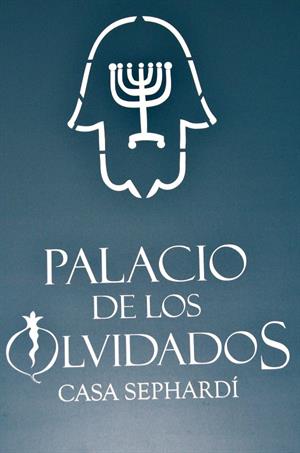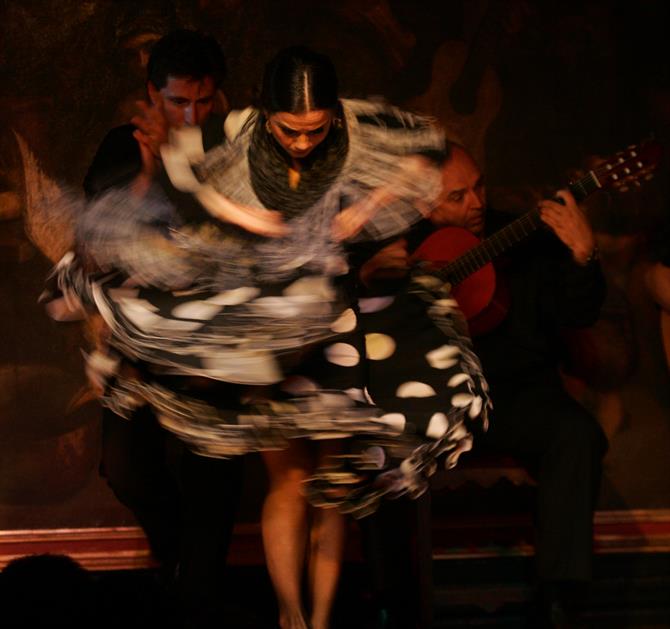Disregarding any particular religious persuasion you may, or may not, be inclined towards, a visit to the Palacio de Los Olvidados in Granada is a must. However, if you happen to be Jewish - then all the better. A fascinating tour awaits - and you'll emerge into the bright sunshine of this wonderful city all the wiser.
Late summer in Granada
At the moment, Granada is enjoying the last rays of the summer sunshine, days warming the terracotta roof tiles draw to a close, as lengthening shadows spread lazily from the Moorish walls of the Alhambra Palace, down over the river Darro, and the cobbled streets that line it. A ramble along the Darro is pleasant at any time of the day, but if you're there around 1pm, take a trip one street back and up the hill of Santa Ines, to the Palacio de Los Olvidados.
A guided tour
The Palace of the Forgotten has a guided tour on at that time, and it's well worth joining in. There are other tours at other times during the day. We did just that last month, and teamed up with Jorge, the enthusiastic and very friendly guide, in order to while away some pre-lunch time delving into the Sephardic past of Granada.
In fact, it was just a party of three, us and him, so we had his full attention, and he ours. The delightful and knowledgeable Jorge is happy to take the tour in Spanish or English, both spoken perfectly and at some speed! It costs just €5 (about £3.70) to take the tour, which lasts just over an hour, and is superbly demonstrated.
About the Palace
The building itself is home to the museum, and houses a private collection of Jewish artefacts and artwork, which are laid out in several rooms, revealing the events and history of the Jews in Spain. The name Palacio de Los Olvidados is a nickname which has been given to the museum, it was originally a palatial private home, belonging to a Jewish aristocrat - unfortunately, nothing more is known about him.
Main points of the tour
After a quick chat to tell us about the known background of the building and introduce us to the tour, Jorge showed us the way upstairs. Starting in the first room at the top of the stairs, we worked our way anti-clockwise around the first floor, and in coming full circle we also came to terms with the struggles, the terrible times and torture inflicted on the Jewish people of Granada.

Items of Interest
We were also treated to an explanation of the treasures held in the glass cases throughout the Palacio de los Olvidados, including a small blue glass perfume bottle from the 4th century. You'll notice how almost everything there carries a Jewish symbol of some significance. Spot the carvings of the Star of David, or the less obvious Menorah hidden within the Hand of Fatima - ceremonial art and symbolism embellished and embroidered onto everything. Jorge also pointed out how the Jews expelled from their homes often kept the keys and handed them down from generation to generation - always in the hope that their cherished homes would one day be returned to them. Today, you'll spot the rings of replica iron keys in every Granada souvenir shop.
Stories and legends
There were stories and facts to chew over. We learned that a Pomegranate - Granada in Spanish - has 613 seeds, the same as the amount of Mitzvot (plural of Mitzvah or Jewish commandments). Is it true? You can count them if you have the patience or inclination!
Other treasures
There's an ancient Torah to admire. After which you can pass through to a family room with games and clothes form the past, and pieces to remind us of Jewish family life. Torture is brought to mind, from the room detailing the Spanish Inquisition, including a carved and intimidating Inquisitor's travelling desk, through to the tools for circumcision.
Afterwards Jorge kindly allowed us up to the tower to admire the rooftop view of Granada and the Alhambra high on the facing hill. A view shared and admired by many, of all denominations, throughout the ages.
Sephardic history in Spain
The expulsion of the Spanish Jews from Spain was one of the greatest upheavals in Jewish history - and the choice for those people was pretty poor - to go or to convert. Anti-Semitism engulfed Spain at that time, and the converts who did stay endured bitter lives, marked with prejudice and struggle. The Catholic Monarchs were far from kind, and the Jewish convert's descendants were hounded for centuries afterwards. Those who fled had to cope with re-establishment elsewhere in Europe and in Morocco, their history and lives uprooted forever.

Details of Palacio de Los Olvidados
Address: Cuesta de Santa Inés 6
Telephone: 00 34 655 553 340
Admission €5
Evenings see a flamenco show in the Palacio de Los Olvidados, you are advised to call for details. Currently running is El Romance de Los Olvidados, based on a poem by Lorca. Admission costs €20.00 and the show begins at 20:00 hours.
